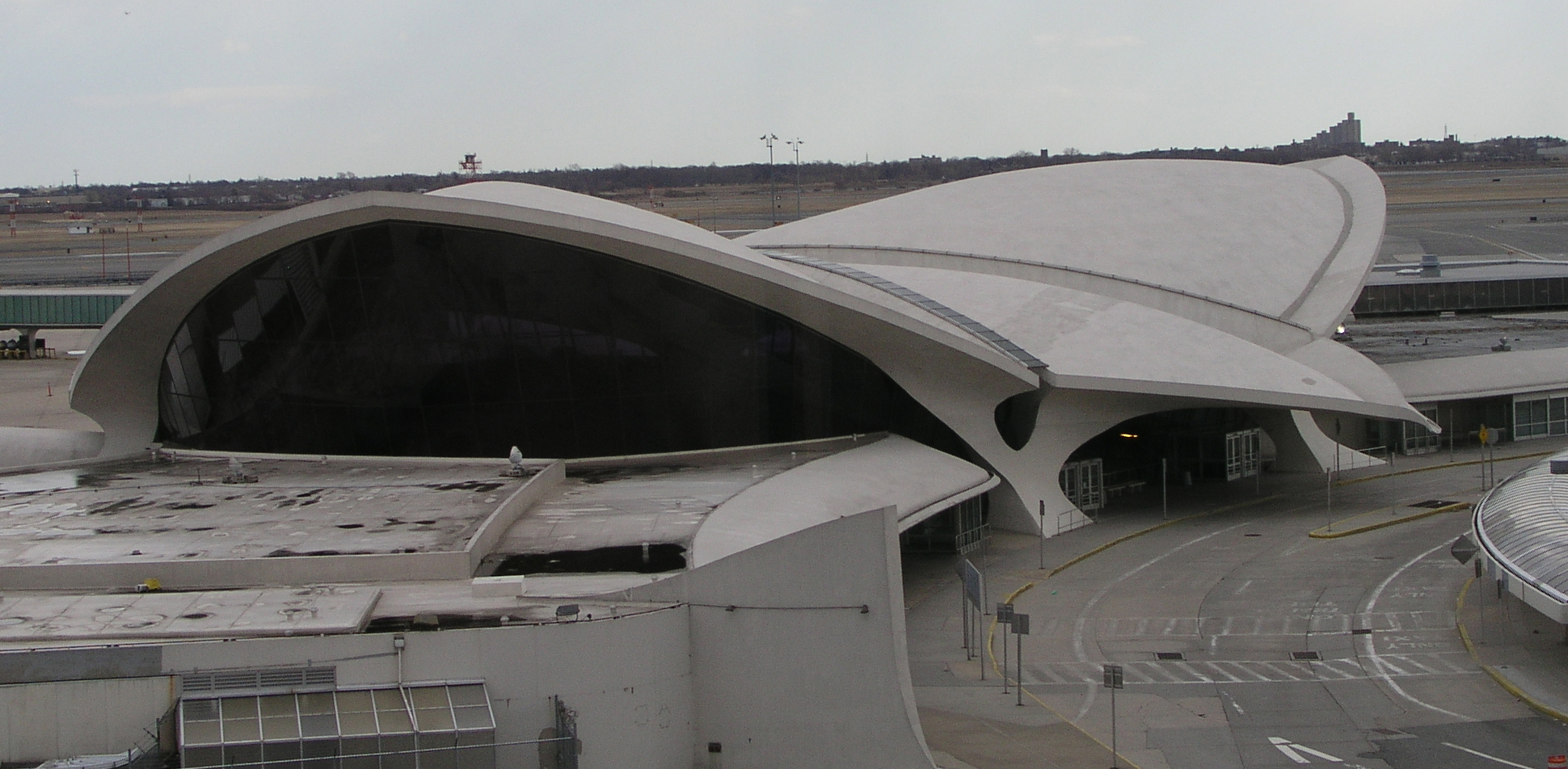Shell roof
Shell roofs are made from structural ‘skins’ where the shell material is thin in section relative to the other dimensions of the roof and undergoes relatively little deformation under load.
They are commonly used where a building interior needs to be free from intermediate walls or columns that might support a more conventional flat or pitched roof, such as; libraries, theatres, leisure centres, airport and railway terminals, and so on.
Shell roofs can be ‘flat’, but are typically curved, assuming a cylindrical, domed, paraboloid or ellipsoid shape. The curvature of shell structures benefits from the same structural efficiency as arches, which are pure compression forms with no tensile stresses. Because of their structural efficiency less material is generally needed compared to more traditional roofs. However, a restraining structure such as an edge beams is required to prevent the shell from ‘spreading’.
Shell roofs may be:
- Single shells such as the dome of the Pantheon in Rome.
- Multi-shell roofs such as Eero Saarinen’s JFK International Airport in New York.
- Reinforced with structural ribs, such as Jørn Utzon’s Sydney Opera House.
- Lattice structures, such as Norman Foster’s Great Court at the British Museum in London.
They are most commonly constructed using insitu reinforced concrete, however, other materials such as and timber and steel may be used for reinforced, lattice or composite structures.
NB the term 'shell and core' refers to a developer's base build that is subsequently fitted out before the building is occupied. For more information see: Shell and core.
[edit] Related articles on Designing Buildings Wiki
- A-frame house.
- Arches.
- Barrel vault.
- Cantilever.
- Conoid shell.
- Domestic roofs.
- Folded plate construction.
- Hyperbolic paraboloid.
- Long span roof.
- Megastructure.
- Pendentive dome.
- Portal frame.
- Purlins.
- Shell and core.
- Sydney Opera House.
- Tensile structures.
- Tension.
- Tension cable and rod connectors.
- The history of fabric structures.
- Types of dome.
- Types of roof.
- Vault.
[edit] External references
- ‘Building Construction Handbook’ (6th ed.), CHUDLEY, R., GREENO, R., Butterworth-Heinemann (2007)
Featured articles and news
Government consultations for the summer of 2025
A year of Labour, past and present consultations on the environment, the built environment, training and tax.
CMA competitiveness probe of major housing developers
100 million affordable housing contributions committed with further consultation published.
Homes England supports Greencore Homes
42 new build affordable sustainable homes in Oxfordshire.
Zero carbon social housing: unlocking brownfield potential
Seven ZEDpod strategies for brownfield housing success.
CIOB report; a blueprint for SDGs and the built environment
Pairing the Sustainable Development Goals with projects.
Types, tests, standards and fires relating to external cladding
Brief descriptions with an extensive list of fires for review.
Latest Build UK Building Safety Regime explainer published
Key elements in one short, now updated document.
UKGBC launch the UK Climate Resilience Roadmap
First guidance of its kind on direct climate impacts for the built environment and how it can adapt.
CLC Health, Safety and Wellbeing Strategy 2025
Launched by the Minister for Industry to look at fatalities on site, improving mental health and other issues.
One of the most impressive Victorian architects. Book review.
Common Assessment Standard now with building safety
New CAS update now includes mandatory building safety questions.
RTPI leader to become new CIOB Chief Executive Officer
Dr Victoria Hills MRTPI, FICE to take over after Caroline Gumble’s departure.
Social and affordable housing, a long term plan for delivery
The “Delivering a Decade of Renewal for Social and Affordable Housing” strategy sets out future path.
A change to adoptive architecture
Effects of global weather warming on architectural detailing, material choice and human interaction.
The proposed publicly owned and backed subsidiary of Homes England, to facilitate new homes.
How big is the problem and what can we do to mitigate the effects?
Overheating guidance and tools for building designers
A number of cool guides to help with the heat.
The UK's Modern Industrial Strategy: A 10 year plan
Previous consultation criticism, current key elements and general support with some persisting reservations.
Building Safety Regulator reforms
New roles, new staff and a new fast track service pave the way for a single construction regulator.


























